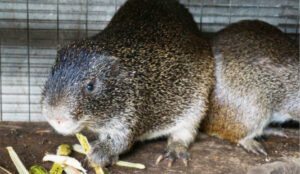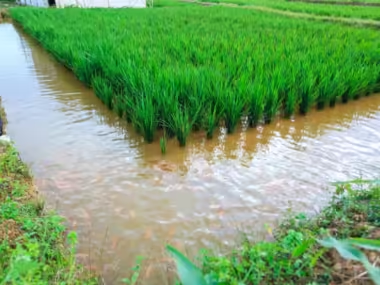Starting and maintaining a grasscutter farm in Nigeria can be a rewarding venture, offering opportunities for both food production and income generation. Grasscutter, also known as the cane rat or bushmeat, is a popular source of protein in many parts of Nigeria. However, successfully establishing and managing a grasscutter farm requires careful planning, knowledge of the species, and dedication. Here’s a comprehensive guide on how to start and maintain a grasscutter farm in Nigeria:

1. Research and Planning
Before diving into grasscutter farming, it’s essential to conduct thorough research and develop a solid plan. This includes:
- Species Selection: Identify the suitable species of grasscutters for farming. The two most common species are the Greater Cane Rat (Thryonomys swinderianus) and the African Brush-tailed Porcupine (Atherurus africanus).
- Market Analysis: Assess the demand for grasscutter meat in your locality and potential markets. Determine if there’s a sufficient market to sustain your farm.
- Location: Choose a suitable location for your farm, considering factors such as access to water, availability of feed, security, and proximity to markets.
- Housing and Infrastructure: Plan the layout of your farm, including housing structures, feeding areas, and breeding pens.
2. Build Suitable Housing and Infrastructure
Grasscutters require adequate housing and infrastructure to thrive. Here are some considerations:
- Housing: Construct sturdy cages or hutches with proper ventilation and drainage. Grasscutters are nocturnal animals and prefer dark, quiet spaces for nesting.
- Feeding and Watering Systems: Install feeding troughs and automatic watering systems to provide a constant supply of fresh feed and water.
- Breeding Pens: Separate breeding pairs into individual pens to prevent fighting and ensure successful breeding.
3. Acquire Grasscutters
Once you have set up your farm infrastructure, it’s time to acquire grasscutters:
- Source of Stock: Purchase healthy grasscutters from reputable breeders or established farms. Ensure they are disease-free and of breeding age.
- Breeding Pairs: Start with a small number of breeding pairs to establish your farm. Monitor their health and reproductive performance closely.
4. Feeding and Nutrition
Grasscutters are herbivores and primarily feed on a variety of grasses, leaves, and agricultural by-products. Here are some feeding considerations:
- Feed Formulation: Provide a balanced diet consisting of grass, legumes, and supplemental feeds such as maize bran, rice bran, and cassava peels.
- Feeding Schedule: Offer feed twice a day, preferably in the morning and evening. Monitor feed consumption and adjust quantities as needed.
- Mineral Supplements: Provide mineral supplements such as calcium and phosphorus to support bone development and reproductive health.
5. Breeding and Reproduction
Breeding is essential for the sustainability of your grasscutter farm. Here’s how to manage breeding and reproduction:
- Breeding Pairs: Introduce breeding pairs when they reach sexual maturity, typically around 6 to 8 months of age.
- Gestation Period: Grasscutters have a gestation period of approximately 140 to 150 days. Provide nesting materials such as grass and hay for pregnant females.
- Weaning: Separate young grasscutters from their mothers at around 6 to 8 weeks of age to prevent interbreeding and promote independence.
6. Health Care and Disease Management
Maintaining the health of your grasscutters is crucial for the success of your farm. Here are some health care practices:
- Regular Monitoring: Conduct regular health checks to detect any signs of illness or injury. Seek veterinary assistance if necessary.
- Vaccination: Follow a vaccination schedule recommended by a veterinarian to protect your grasscutters from common diseases.
- Parasite Control: Implement parasite control measures such as deworming to prevent infestations and maintain optimal health.
7. Marketing and Sales
Once your grasscutter farm is up and running, it’s time to market your products and generate income:
- Market Awareness: Promote your grasscutter farm through various channels, including social media, local markets, and word of mouth.
- Product Differentiation: Highlight the quality and nutritional benefits of grasscutter meat to attract customers.
- Value-Added Products: Consider diversifying your product offerings by selling smoked grasscutter meat, sausages, or other processed products.
8. Record Keeping and Evaluation
Maintain detailed records of your farm activities, including breeding, feeding, health care, and sales:
- Record Keeping: Keep accurate records of breeding pairs, birth rates, feed consumption, and expenses.
- Evaluation: Regularly evaluate the performance of your farm against key indicators such as growth rates, reproduction rates, and profitability. Adjust your management practices accordingly to optimize farm efficiency.
9. Continuous Learning and Improvement
Grasscutter farming requires continuous learning and adaptation to new challenges:
- Stay Informed: Keep abreast of developments in grasscutter farming techniques, disease management, and market trends.
- Networking: Join farmer groups, attend workshops, and connect with other grasscutter farmers to share experiences and knowledge.
- Adaptation: Be prepared to adapt your farming practices in response to changes in market demand, environmental conditions, and emerging technologies.
By following these steps and staying committed to best practices, you can establish and maintain a successful grasscutter farm in Nigeria. With proper care and management, grasscutter farming can be a profitable and sustainable venture, contributing to food security and economic development in your community.










